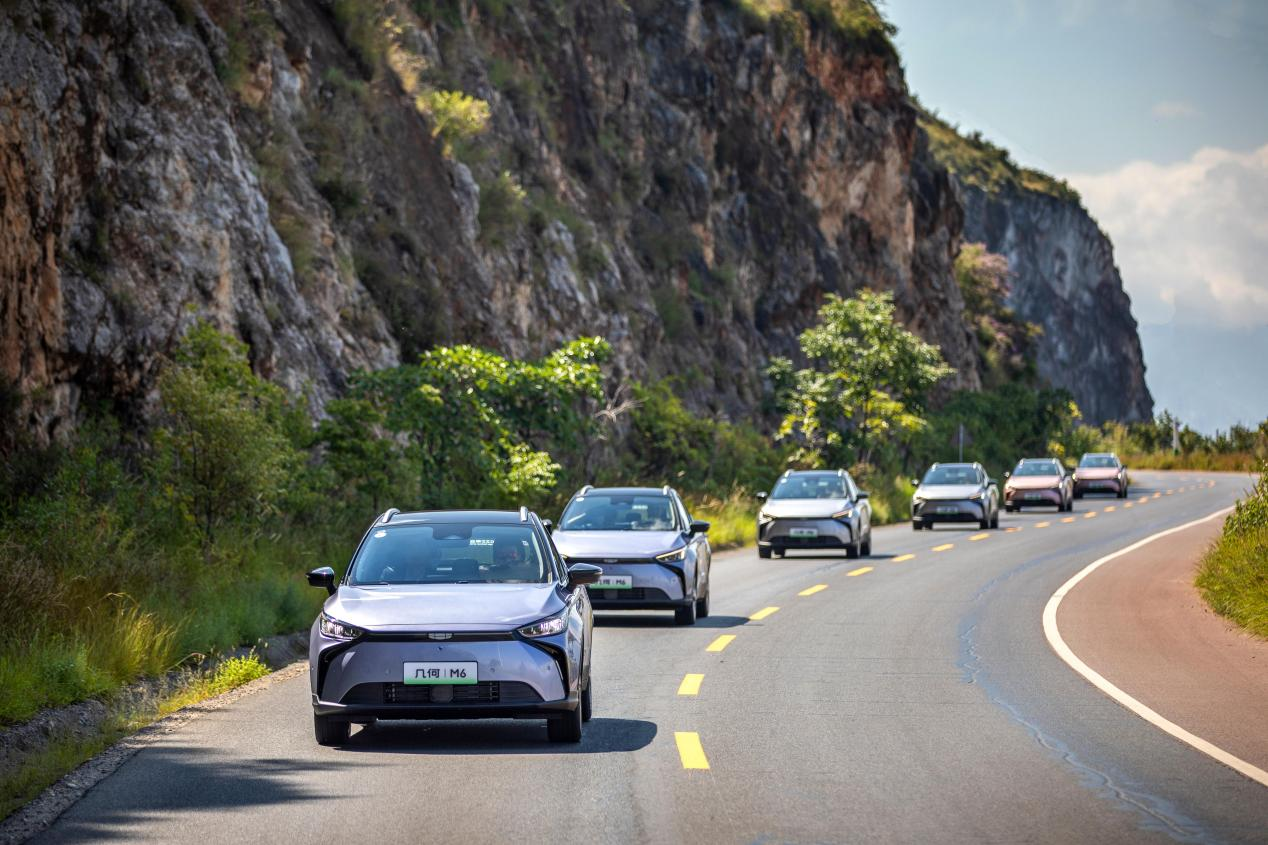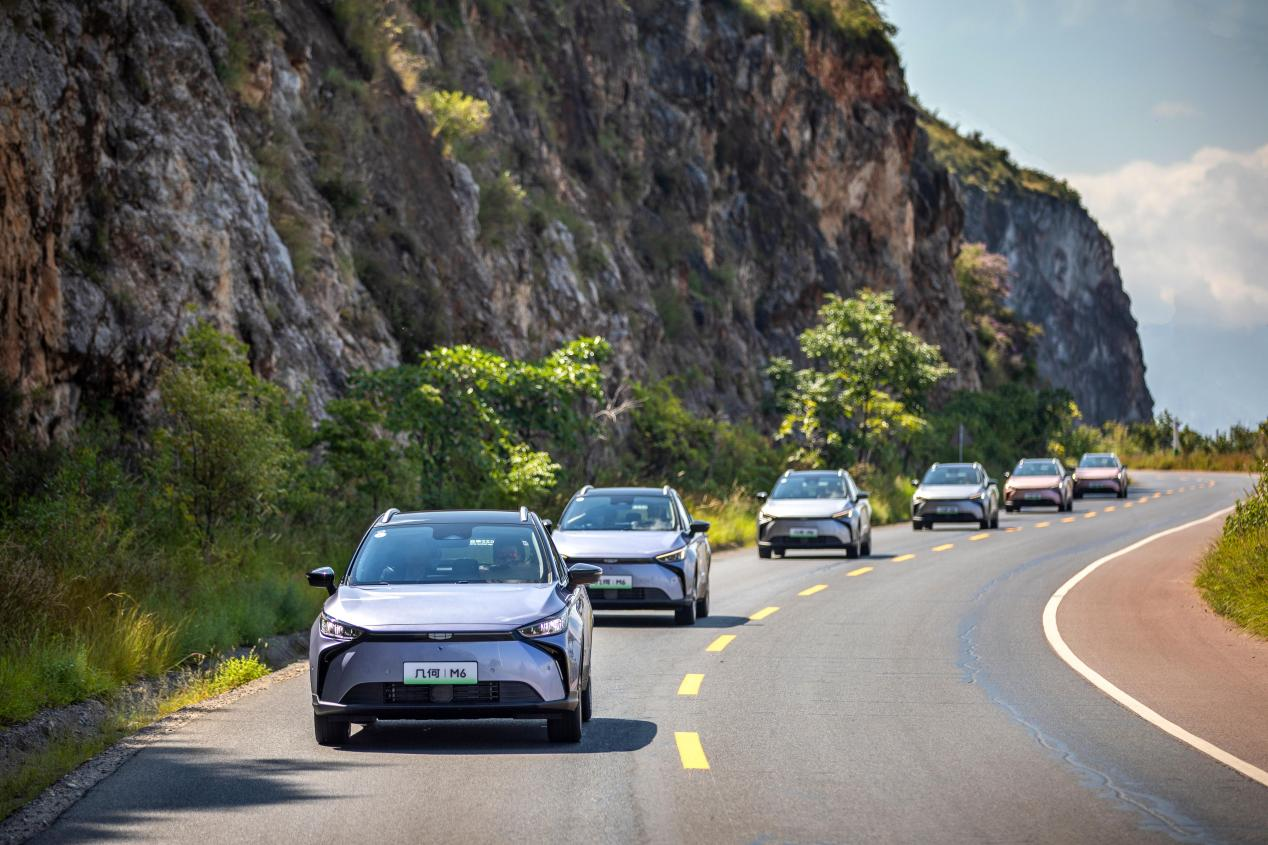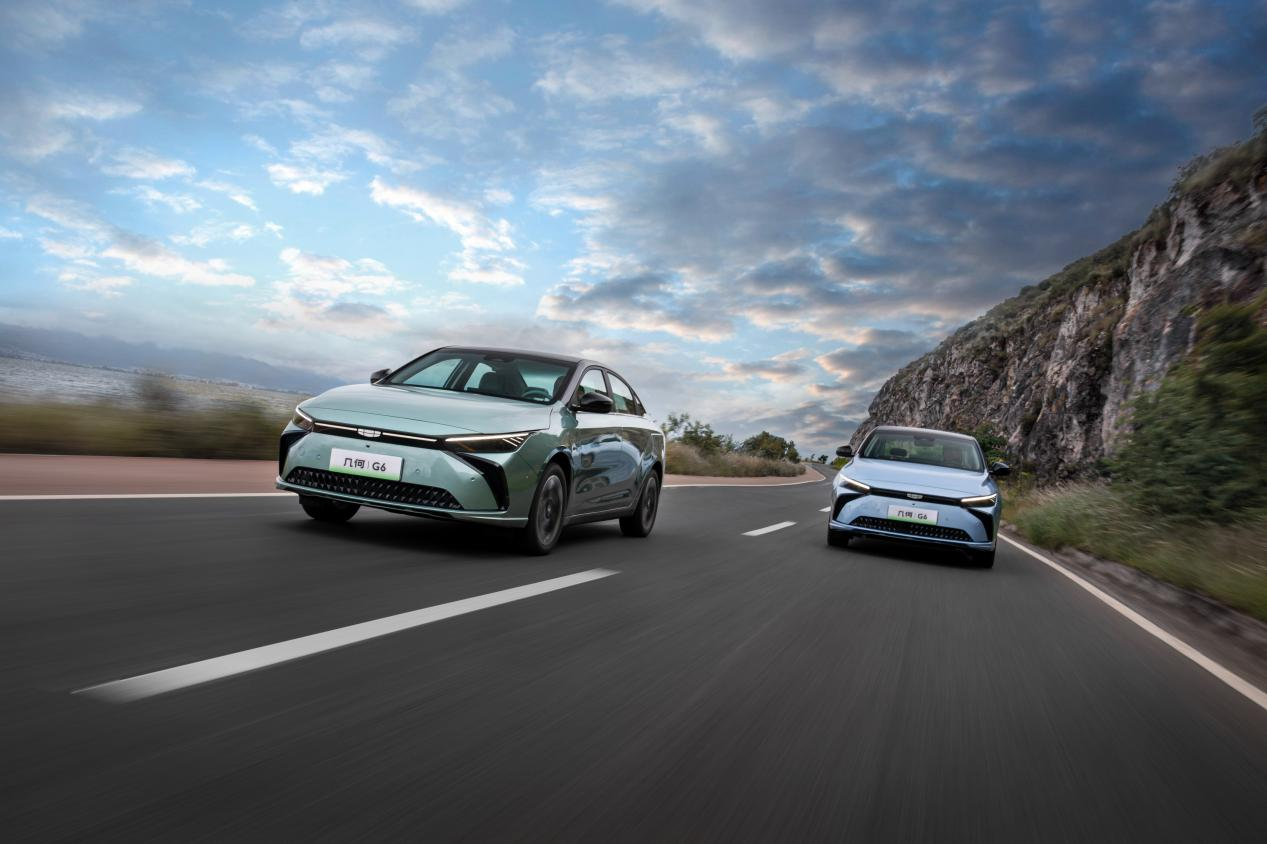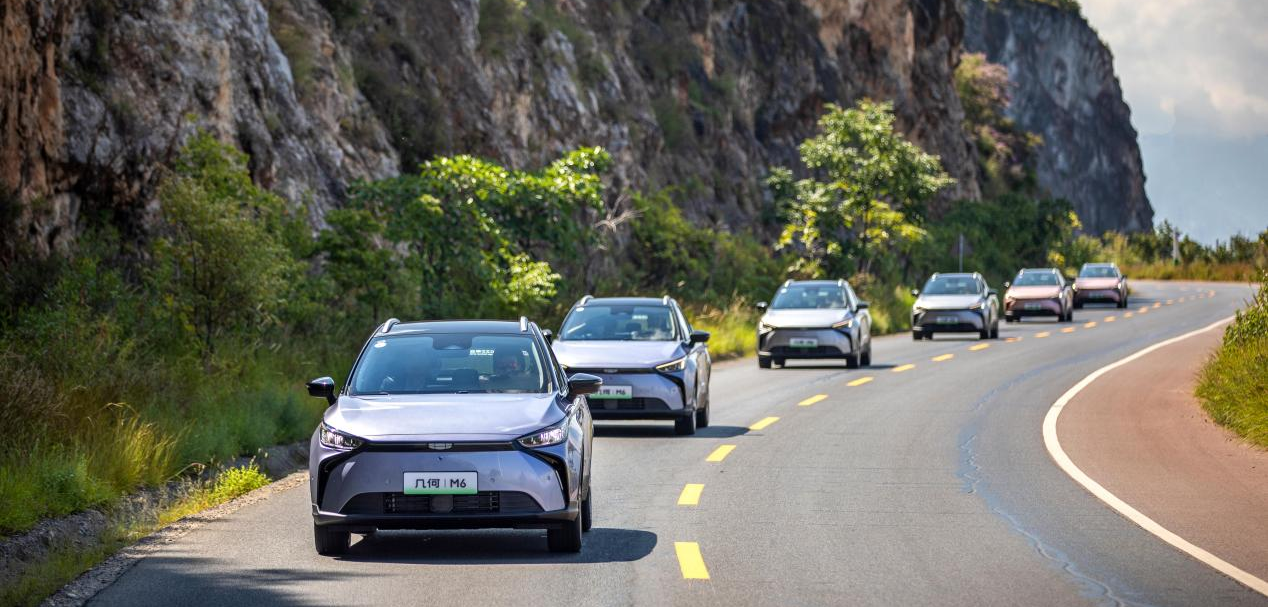Issue 11
The hot selling in the automotive industry has elevated the status and influence of Huawei, the “non-car maker,” in the automotive circle. Recently, the author went to Dali to test drive two new Geely pure electric vehicles, the Geely G6/M6, powered by Huawei. Can these two new vehicles bear the weight of Geely’s electrification transformation strategy model?
Old Wine in New Bottle
Whether it’s the Geely M6 or the test drive car G6 that the author got, small partners who pay attention to the automotive market can see at a glance the “clues” of these two new cars. Both overall shape and design language follow the familiar Geely family style, not outstanding but classic and durable.

Of course, as Geely’s transformation into electrification, for example, the new Geely G6 has been trying to close to the popular design of new forces in many details of its appearance.
For example, this newly illuminated full-light language shield logo, with the full-length LED daytime running lights, significantly enhances the vehicle’s recognition; or the automatic pop-up hidden door handle – it adds a sense of ritual, and how much the drag coefficient can be optimized is not so important.

And for example, this interior design, which is deeply influenced by extreme luxury and Volvo’s lineage, is simple and not clichéd. The interior panel made of wheat straw and the air purification function built into the air conditioner means that there is almost no unpleasant odor generated even in direct sunlight of about 30°C during the test drive, which is much appreciated.

As for the shifter upgraded to “Mercedes-style,” on the one hand, new force models such as XPeng P5 and Changan Shenlan SL03 at the same price point have followed suit. On the other hand, as Daimler’s largest shareholder, it is understandable for Geely to follow this flagship design. Given the actual application scenario, the shifter-style shifting can indeed greatly improve ease of use after getting used to it.
Secondly, the designer designed the original shift area to be a “loft” structure, with the upper layer meeting the ergonomic elbow support needs of the human body, while also creating a wireless phone charging platform – one of the few available wireless charging platforms among all car models that support wireless charging protocols, such as Issue cars. The lower level is an open storage slot with considerable space, fully meeting the needs of front-seat passengers.
When it comes to in-car infotainment systems, it’s hard not to mention Huawei, a sought-after car tech supplier by various new energy brands. Not only can they provide car entertainment solutions for major car manufacturers that are hailed as “the industry ceiling,” but the amount of “Hua” in their products is almost equivalent to the popularity and relevance of traffic and topics.
Geely understands this very well. Their newly launched Lynk & Co 06 Remix has just started to embrace Huawei, and now the Geometry M6 and G6 directly use Huawei’s HarmonyOS system. Compared to many of Geely’s earlier models, the two new vehicles have made great progress regarding smoothness, usability, and functionality.

In conclusion, the overall static performance of these two new vehicles by Geometry is a typical example of “old wine in new bottles.” While it may seem unremarkable at first glance, it is a new product from Geely that has incorporated many sincere efforts.
Aged Wine is Just as Delicious
Since Geely’s acquisition of Volvo in 2010, it took five years of accumulation to start the “New Geely” era with the launch of the Borui, which was once named “the most beautiful Chinese car” in 2015. The following Bor Yue and other models became best-sellers. With the continued efforts of brand pioneer Emperor Hao, they have helped Geely reach its peak as the first Chinese brand to achieve an annual sales record of over one million cars.
Since then, every car model under Geely, including the later released Lynk & Co brand models, share a common trait – quality. The pure electric brand Geometry, which was launched later, has always had this unique advantage.
Take the Geometry G6 that I drove for example. Starting from the hotel, the test drive route covered over 100 kilometers around Erhai Lake, including urban roads, city expressways, highways, and mountain roads. The most impressive aspect of the Geometry G6 for me was its outstanding chassis quality compared to other vehicles in its class.

Firstly, when facing bumpy or even damaged road surfaces, the suspension response of the Geometry G6 is prompt and crisp, almost without any extra bouncing, keeping the chassis stable and composed throughout the entire journey.
Secondly, even when switching to “Sport” mode, the vehicle does not exhibit the obvious torque steering problem caused by the instant peak torque output of the motor seen in other electric vehicles of the same class, as the performance of the Geely Geometry G6 is still based on the “mismatched” dragging tires.

Thirdly, because of this, the Geely Geometry G6 can still provide drivers with a certain amount of driving pleasure in the continuous winding mountain roads. However, once the action is slightly greater, the shortcoming of the tires is once again highlighted, with the screeching sound of slipping warning me that this is just a family car more suitable for stable commuting.

In summary, the Geely Geometry G6 demonstrates the car-making heritage and strength that should come with being backed by a major automaker in the field of pure electric sedans priced at around 150,000 RMB when compared horizontally with new players in the same price range, although there is still room for improvement in some details.
Electric Power Geometry?
The Geely Geometry G6 is equipped with a ternary lithium battery and is available in two models with ranges of 480km and 620km respectively. Based on the “SEM Intelligent Energy Management System” 2.0 version, the battery management system inherits the tradition of “real endurance” of the Geely brand. Based on my test drive of nearly 150km in a day, the remaining range displayed on the car after returning to the hotel was 480km, giving a sense of range safety (the above data is for reference only and is not a rigorous testing standard).

Another impressive feature for me was the performance of the energy recovery mode in the energy-saving driving mode of the Geely Geometry G6. After releasing the accelerator pedal, the process of recovering kinetic energy is evident but not jerky, without strong drag sensation like that in Model 3. This allows the driver to easily control the rhythm of their foot and is also more friendly to rear passengers. In short, this is an easy-to-use pure electric sedan that can help users who have transitioned from gasoline cars easily find a suitable driving rhythm.
The Electric Impulse Has Something to SayAs a pure electric brand of Geely, the overall performance of the two new Geometry models has met expectations. In terms of mechanical quality, it has the advantage of a big factory among models at the same price; in terms of software quality, Huawei’s empowerment has effectively avoided Geely’s current shortcomings.
However, in the increasingly fierce new energy market, meeting standards is obviously not enough to truly stand out. To achieve a real breakthrough, a completely new design concept and brand concept are essential. Internally, it can refer to what Zeekr is to Lynk & Co, and externally to what Deep Blue is to Changan. We look forward to the emergence of a brand new Geometry brand.

This article is a translation by ChatGPT of a Chinese report from 42HOW. If you have any questions about it, please email bd@42how.com.
